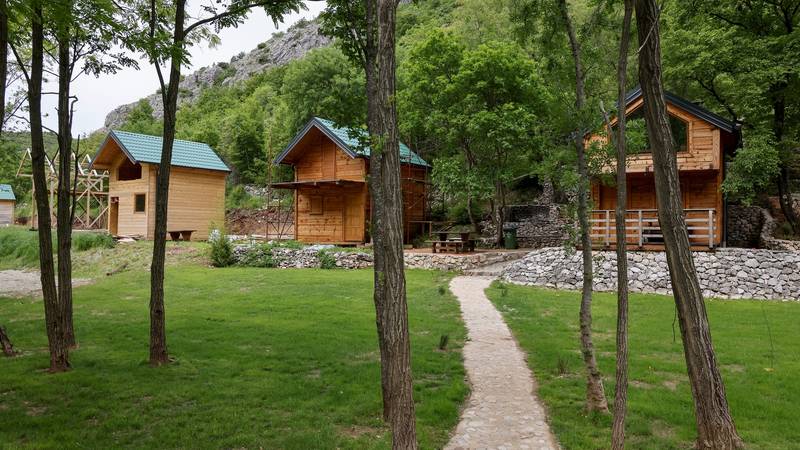In Taiwan, the judgment of the last nuclear reactor does not end the debate – Liberation

For Mr. Chen, the Maanshan nuclear power plant is part of the landscape. Originally from Hengchun, south of the island of Taiwan, this resident never failed to go to Nan Wan, a small bay which overlooks the ocean, located a few minutes from his hometown. And as far as it can remember, its fine sandy beach has always been dominated by the active power station.
However, this Saturday, May 17, it ceased to produce electricity. After forty years of operation, the latest reactor in service on the site was stopped, to the dismay of Mr. Chen, who was employed there. « I largely benefited from the power plant, I can only be for », confides the 50 -year -old man, who wanted to give only his last name.
Maanshan, also known as « NPP 3 » (Nuclear Power Plant 3), is, as its name suggests, the third nuclear power plant in Taiwan. In recent years, these sites have been closed, one after the other, following the end of their operating license for forty years. A policy pursued by the Democratic Progressive Party (DPP), the ruling party since 2016. This one has long had the slogan to make Taiwan « A denuclearized nation ». During a referendum in 2018, the Taiwanese expressed their desire to keep nuclear on the island. But the following year, the government of the time decided not to extend operating licenses.
After the outbreak of the first two power plants, the first reactor of the « NPP3 » ceased its activity, as had been planned, in July 2024. The judgment of the 2nd, on May 17, acts the closure of the site and the release of Taiwan from the civil nuclear. The government of the autonomous island is the first in Asia to make this choice. It is only the third in the world after Italy and Germany.
The south of Taiwan is « Green », The color associated with DPP. In the last presidential election, in 2024, the victorious candidate of the party, William Lai, collected 47 % of the vote in the region. But when the nuclear is mentioned, the inhabitants of Hengchun make their disagreement heard. « I am very disappointed with politicians », said Mr. CHEN, who has still not digested the « treason » of the 2018 referendum.
Met meeting on the outskirts of the bay where the power station is located, the man, the graying hair and fine rectangular glasses on the nose, tells his attachment instead, which allowed him to find a job while being able to stay in his hometown, where he has his whole family. He describes his missions, his colleagues who have become friends. Above all, he says his certainty that the site is secure, despite health concerns that he attributes to his daily contact with radiation.
From now on, it is by far that he observes his old workplace. Since he decided to leave, in November, the company that mandated him in the complex, he helps his wife who manages a youth hostel in the bay, and whom they owned. This is located facing the ocean which, on this May afternoon, is deep blue. As tourists come to enjoy the waves and the sun in the shade of the parasols, the two characteristic domes of Maanshan are distinguished nearby. « Many people will lose their job following the dismantling of the power plant »plans the ex-employee, with a dark air.
On the Hengchun market, in the middle of fruit, vegetables and fish stalls, we also regret the closure of the « NPP3 », and we worry. “It is not reasonable to do without this energy. I am afraid that our bills increase ”fears Xin Ru Jiang, in the shade of his flower shop. Among other advantages, it as the inhabitants around the power station benefit from reductions in the price of electricity.
The end of nuclear also raises an impact on the Taiwanese economy, whose tech sector is its engine. However, this is increasingly demanding in electricity. Faced with the DPP antinuclear policy, the KMT, the opposition party, alerts on possible energy shortages. A disaster scenario challenged by Taipower, the Taiwan public supplier of electricity.
« The current policy which consists in closing nuclear power plants while engaging in a transition to renewable energies promotes the sustainable development of technological companies and the energy resilience of Taiwan »also estimates the Tsai-Ying Lu researcher, director of the DSET climate resilience program, a think that founded by the government. According to her, despite a current energy mix in large part composed of imports of liquefied natural gas (42.4 %) and coal (39.3 %), and delayed development of renewable energies (27.9 %), Taiwan could still achieve carbon neutrality in 2050. An achieveable objective while meeting the growing needs of tech companies.
This does not prevent a new interest in nuclear in Taiwanese opinion, which wins to the DPP government. A real turnaround while Fukushima disaster in Japan in 2011had deeply marked the island. « The closure of the last reactor is a happy outcome for the anti -nuclear movement »was delighted the president of the Tepu, Shin-Min Shih, an association at the forefront of this mobilization, « But the fight is not finished ».
Indeed, this May 13, only a few days before the reactor 2 of Maanshan, the KMT had a law adopted to extend the operating licenses of the power plants. The maximum time provided by Taiwanese legislation to exploit a reactor has increased from 40 to 60 years, opening the possibility of relaunching nuclear activity if a government decided. But for the expert tsai-ying lu, it would then take three to five years to restart these sites. « Whether in terms of costs or time, it will be very difficult for Taiwan to envisage the restart of power plants »she summarizes. The nuclear debate remains open. In Hengchun, the « NPP3 » is not likely to disappear as soon as the landscape.








